The Big Players are coming to join the HDDSLR Party! (PART I)
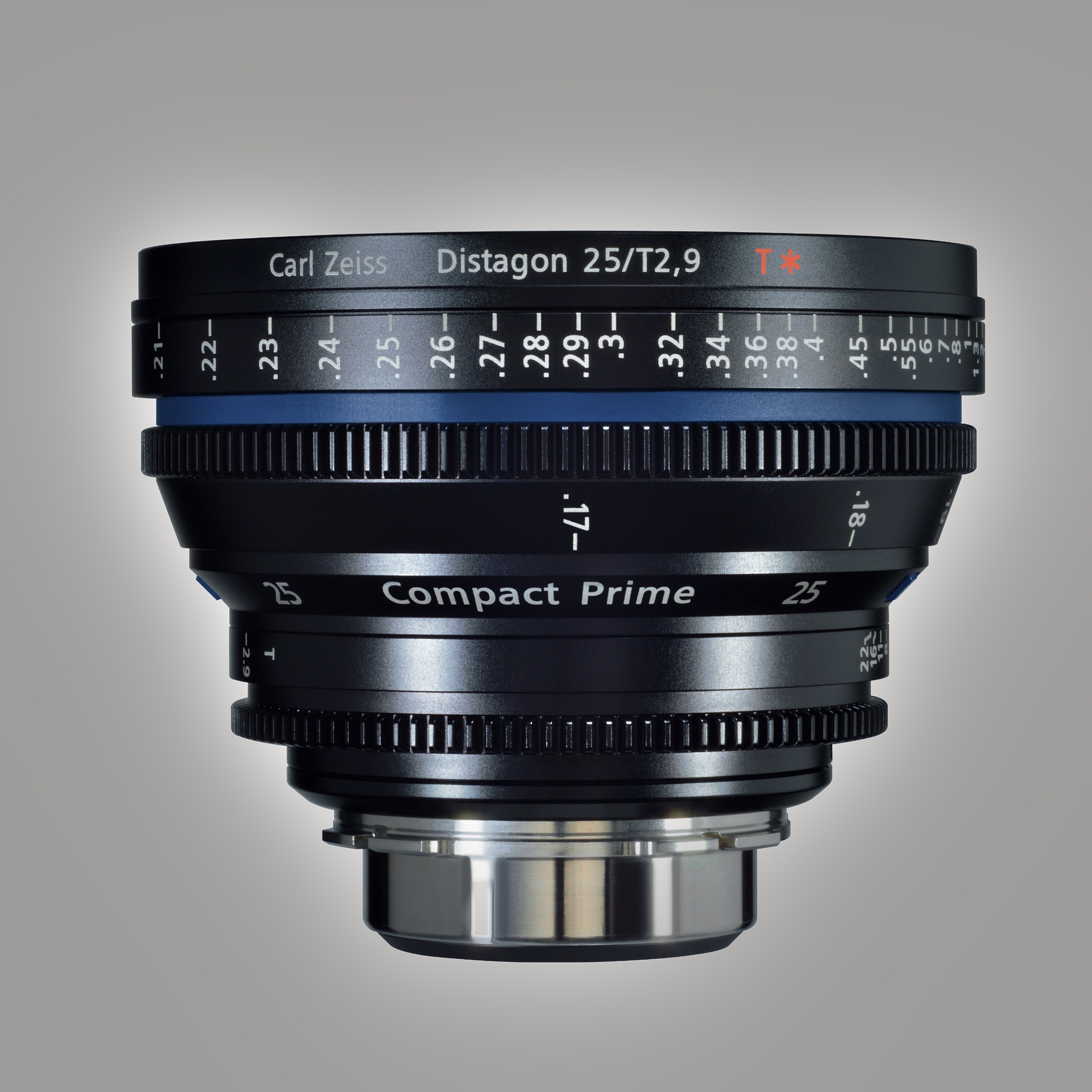
At the end of 2009, I predicted two things:
First that Apple was going to release an iPad/iSlate.
My second prediction is that 2010 would be the year of the HDDSLRs – one in which finding their full potential with the help of other partners would lead to incredible developments.
2010 will indeed be seen as the coming of age of HDDSLRs.
Today Zeiss showed the very first “Compact Prime 2” Cine Lenses that will mount on HDDSLRs. In fact these are quite versatile in that they come ready to accept both and EL (Canon mount) and PL (Cinema standard) that can be switched on the field w a Tor-X screwdrivers. (Although Zeiss recommends you have them do this.)
I’ve had chance to get my hands on this series and I immediately fell for them – I have also been promised a chance to test them out soon -I’ll be sure to share the test with you on this blog within the next few weeks.
The optical quality is excellent. More empirical test coming on that soon. But the main reason pros and advanced filmmakers will flock to this series relate to the ergonomics and practicaliy of using this lens on a just about any production. You will find that the optics have been re organized in this lens – but that it will perform very similarly to your ZE set. The main difference is that only the very best optics are chosen for this series vs the ZE lenses. The second key point is that the aperture blades comprise of 14 blades vs the ZE series with 9 – therefore you can expect a much more beautiful focus falloff..
At this point they are releasing a set of 8 Compact Primes at NAB 2010 and making them available for sale in May. A set of 6 will retail for less than $20,000. You can of course buy lenses independently at a higher price. Zeiss will be making the announcement as to which specific series of lenses they are releasing.
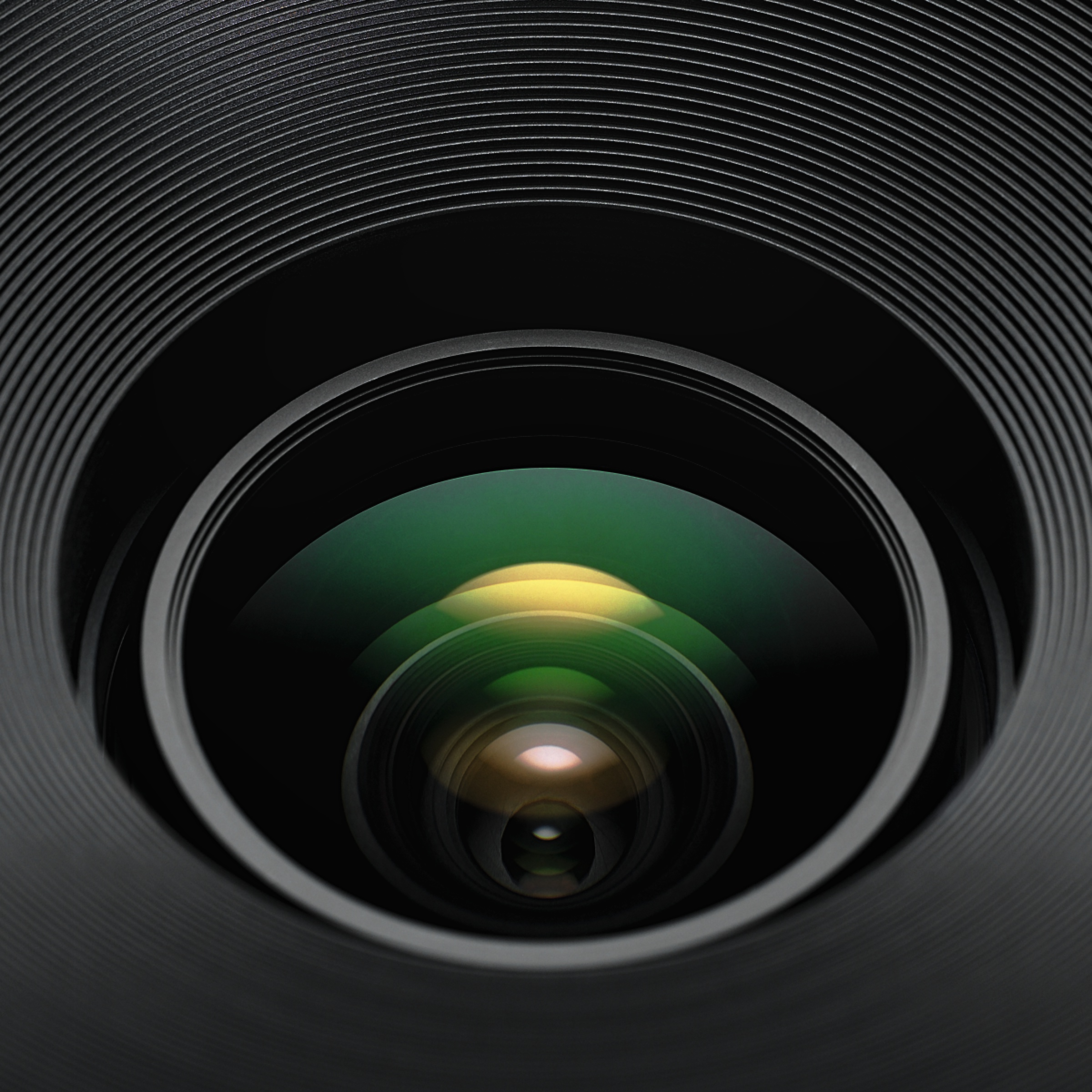
So what’s the big deal? Well for once this is the first series of PL lenses that Zeiss has produced in history that covers the full 24mX36mm sensor – EVER…
All others covered he Super35mm format… This is therefore a good long term investment it seems. This should also put an immediate halt to people removing their mirrors and drilling into their mirror boxes to use these lenses.
Lastly – this is the first lens that I’ve received – that I CANNOT WAIT TO USE!
Why? My 1st AC/Focus Pullers will love me. When the lens it says it’s focused a .38 meters – guess what – it is!
Set your marks – and if you and your actor hit their makes – you’re tack sharp.
This cannot unfortunately be said about any Canon EF lenses much to my chagrin. You should know that those lenses are not mechanically connected to the focusing ring – there is a ultrasonic motor between the focusing ring and the lens groups – ergo lenses are moved around by magnetic forces -not simply by good old friction or gears… therefore if you take the time to focus on a spot on a EF lens (to mark a spot) – it will not be able to hit that spot consistently over a few tries no matter how careful you are – and that can be exasperating when shooting a narrative with actors of course – not being able to trust your marks.
Over the past 6 months I have ben shooting film/videos with the Zeiss ZEseries for that very reason. Being able to pull focus with a camera that is in motion is absolutely critical. And therefore on the Zeiss ZE lenses solve the dilemma. In fact most of the 1st AC who are pulling projects with me – grumble about the challenges the Canon lenses give them… with the ZE Zeiss – they’re extremely happy. The irony here of course is that the much more high tech Canon lenses with the world’s best AF, stabilizations and zooms – are being beaten by a 20 year old model of lens… few electronics…no autofocus…no fancy nadda. I should say that I travel with both sets on jobs that require me to shoot stills – maybe it’s me, maybe it’s my eyes – but I need AF that the Canon EF lenses provide me. Without the AF my performance is simply too poor.
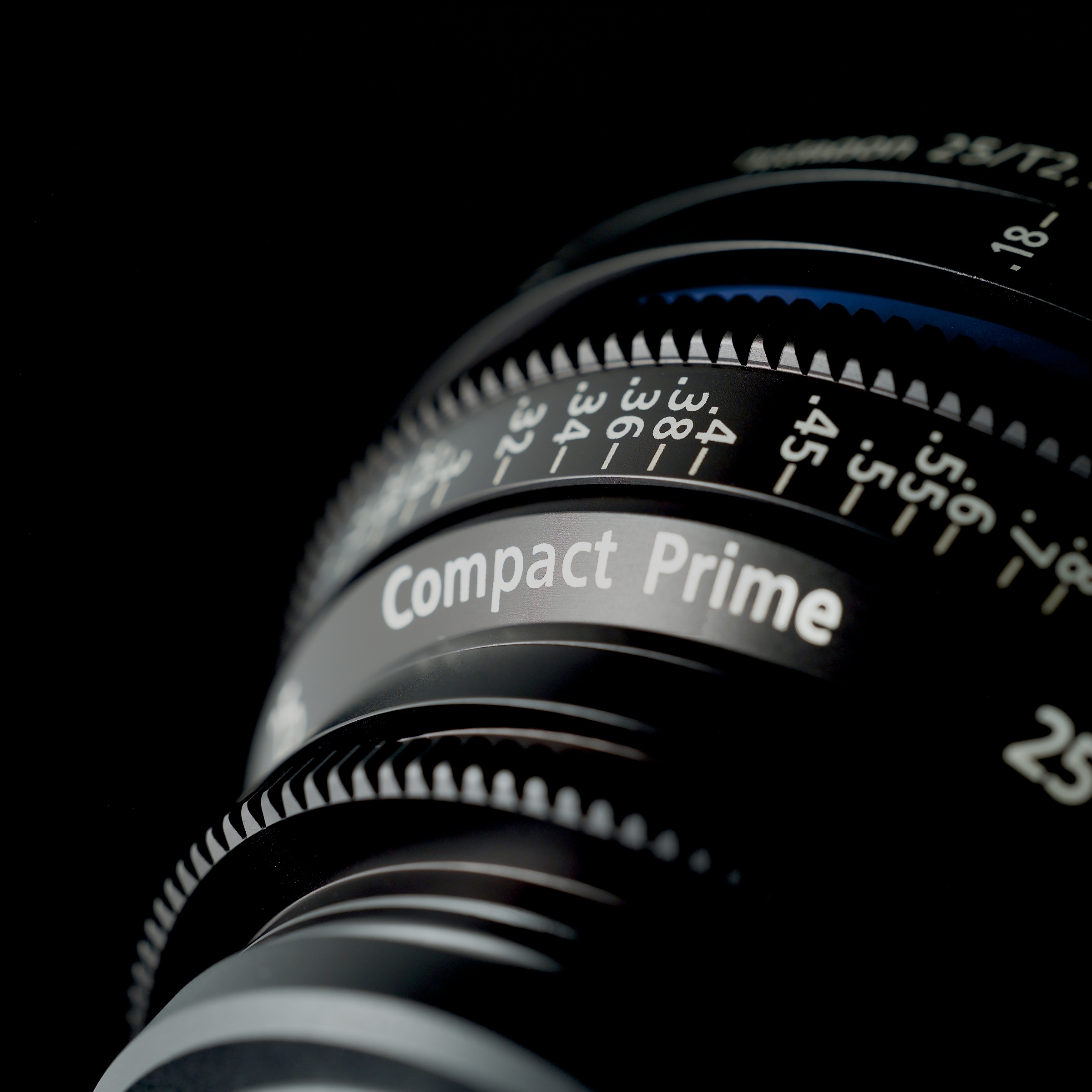 Therefore – this new series of “Compact Prime 2” cine lense series is the real thing for people using to use the Canon HDDSLR systems on more serious video/film productions. Not only is it built for the cinema wolrld – it also does two thing no one else does or offers to the HDDSLRs – The “Angle Focus of Rotation” is huge. What this means is that there is a greater than 300º rotation on the focusing barrel fom macro to infinity… this allows you for much smoother and ACCURATE focusing pull! The entire area is also carefully marked with detailed distance measurements on the focus ring. This is something you can’t do on a canon lens where the motion from right to left for going from infinity to macro – is at times 1/2 an inch or less on some lenses… now you can TRULY follow focus and/or focus like the pros do out there!
Therefore – this new series of “Compact Prime 2” cine lense series is the real thing for people using to use the Canon HDDSLR systems on more serious video/film productions. Not only is it built for the cinema wolrld – it also does two thing no one else does or offers to the HDDSLRs – The “Angle Focus of Rotation” is huge. What this means is that there is a greater than 300º rotation on the focusing barrel fom macro to infinity… this allows you for much smoother and ACCURATE focusing pull! The entire area is also carefully marked with detailed distance measurements on the focus ring. This is something you can’t do on a canon lens where the motion from right to left for going from infinity to macro – is at times 1/2 an inch or less on some lenses… now you can TRULY follow focus and/or focus like the pros do out there!
Lastly -one nice finishing touch – the focusing rings come complete with mounted focus rings that allow you quickly an easily attache remote focus motors, zoom motors and even yes… a motor to the APERTURE ring!!!
This will be the firs time you can control the aperture smoothly and remotely via wireless and that is HUGE !
Lastly – Zeiss will be releasing a lens support that will mount on rods that will better supports the lens – – especially if it has 3 Preston motors working on it wirelessly!
So here is a CLEAR sign to me that the HDDSLR market is coming of age – and that interest in it is far from waning. One important note: These lenses are not initially being released to work on any other HDDSLR system… which is a bit of statement to Canon’s clear lead in this arena…


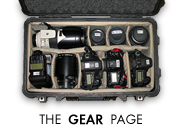

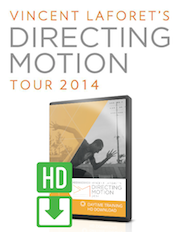
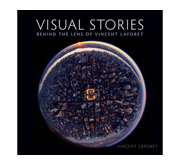







Sugoi!
Very cool, looking forward to seeing your tests.
So do you know what lenses they are making?
What are the focal lengths of the 6 prime lens kit (for under $20,000)?
Vincent Laforet Reply:
February 20th, 2010 at 3:31 pm
@Tom, Zeiss will announce them at NAB
Awesome!
I loved the optics on the ZF series, but the radically different speeds of the lenses, and the fact that they focused backwards was very frustrating. Will version 2 of these lenses focus the correct way? Also, I have heard roomers that all of the lenses will be at least as fast as T2.8, and possibly even T2- do you have any idea of how fast they will be?
Will these be adaptable to Nikon? I take it manual stop down only with all mounts?
Also, 25 mm 2.9? That’s slow!
Jack Reply:
February 20th, 2010 at 10:40 am
@troy, no, of course they will not be adaptable to Nikon. Canon users have extolled the virtues of the larger EOS mount for years, and the variety of lens options it provides (mostly falling on deaf ears of Nikon users who are proud their system uses such arcane tech it can function on a camera from 1959, which they surely use). If you want to shoot video in a DSLR you have 3 choices; the 550d, 7d and 5dmkII. It would be pointless to make versions of these for the nikon mount, at this time. You can use the ZF lenses. They may not be in the same class, but you can put them on your 1959 Nikon F. Canon has always been the tech leader, and they will continue to push farther ahead in movie making. Just wait until the 5DMKIII is announced (RAW video capture!!!).
troy Reply:
February 21st, 2010 at 5:03 pm
@Jack,
Since you know so much about what I do Jack, thanks for such an absolute answer.
I shoot Canon but am going to switch to Nikon. I was more interested in using these for stills since one of my 2 main issues with Canon is the CA. These do not electronic couple with the canon but some of the zeiss do with Nikon so I was hoping possibly……
Canon under 100mm make exactly 2 great lenses one one is a 14mm so not useful to me on a daily basis(the other being the 35 1.4) The 50 1.2 has so much CA backlit I almost can’t use it and the lack of a sharp zoom is a killer. Top that with a VERY weak AF and for the work I do, Nikon is a better still camera.
As for video I agree Canon is leaps and bounds better but I was looking to use them with stills.
Bob Reply:
February 21st, 2010 at 7:10 pm
@Jack, I might equally point out that Nikon users are not hindered by the ‘slipping clutch’ on their AFS lenses, which return to the same point of focus and that failing that, like many in the motion picture industry they have the choice of Nikkors dating back to 1959 when it comes to shooting video on a DSLR. No need to buy new lenses, no matter how tempting they appear. And I’ve no doubt a Nikon version will follow, just as the Canon mount Zeiss MF lenses followed to Nikon version.
Marcuys Reply:
March 23rd, 2010 at 8:28 pm
@Jack, actually there are four options in camera body selection to shoot HD video with – you omitted one very big player;
1DMarkIV
Performs superbly
Very cool. Although predicting that Apple would announce a tablet in 2010 isn’t exactly southsaying, you know what i’m sayin’?
Have you left still photography completely behind, Vince?
Is there a way for people to shoot HDDSLR video without spending thousands of dollars in accessories — you seem to be doing it now with a staggering amount of equipment — daunting, so say the very least.
Vincent Laforet Reply:
February 20th, 2010 at 3:30 pm
@dqm, I called it the hear or the tablet for more than just the piece of hardware DQM… give me ’til the end of 2010 and see what’s coming…then call me out – fair enough?
30% of the work I do is still and that work comes in consistently.
Yes of course – you can shoot a still or film with 1 camera and one lens and no light… the bels and whistles make it a lot easier to do … it’s a personal choice.
dave metty Reply:
February 20th, 2010 at 8:58 pm
@Vincent Laforet,
also, as far as shooting with all the bells and whistles on a DSLR? if you compare the cost of traditional 16 and 35mm cameras and all their necessities to get a proper shot the DSLR and all its bells and whistles is amazingly cost effective and quite frankly in my opinion totally worth the investment. AND if one is savvy, they may consider jump starting a once forgotten about craft or career due to $$$$’s. I mean the ISO capabilities in the 1D mark IV nearly replace a lighting crew and equipment… its mind blowing to me
Clay Reply:
March 21st, 2010 at 9:07 am
@dave metty,
You ain’t a kiddin. Especially when you factor the cost of fresnel, kino’s etc. gaffer equip. labor etc. Then the 1D M4 starts to look pretty reasonable.
Looks like RED may be in real trouble if they can’t get their act together before MKIII and these come out. A statement for Canon is right…
This is excellent. Thanks much for the heads up, vincent.
Nice that these lenses cover a FF sensor but the speed on the wides are slow for primes… 18 mm T3.6 (f3.5), 21 mm & 25 mm T2.9 (f2.8)….
is it wrong to be aroused by lenses????
Marcuys Reply:
March 23rd, 2010 at 8:30 pm
@stan, not really – it’s just wrong to actually say it out loud
i think this video would find a happy place on your blog
http://vimeo.com/9243537
dave metty Reply:
February 21st, 2010 at 5:14 am
@joe, that was fantastic thanks for sharing
a quick question from a non-film guy:
Can you explain what the fuss is about how how you absolutely need to get these lenses to get razor-sharp focus and how the Canon lenses just will not do?
I get that the motor in between the focus ring and the lens groups could introduce a bit of leeway, but does it really make a difference?
I mean, how shallow does your DOF have to be for that minute focusing distance shift to make your subject out of focus? Is your actor/subject hitting his or her mark exactly, within a few millimiters? When the 1st AC is pulling focus, is he/she able to stop the follow-focus wheel with less than a fraction of millimiters’ accuracy?
And even with all of that, isn’t a perfect focus going to be lost anyway in the projection room or the movie theater, when the projector’s focus is a tiny bit off? or the screen is moving back and forth very slightly, or the air temperature is fluctuating?
Again, I’m not very knowledgeable in film matters, so if I’m missing something, please let me know. But I’m having a hard time understanding how it could make such a difference…
cheers and thanks for the blog
Hugo Reply:
February 21st, 2010 at 1:47 am
@Hugo,
Just wanted to add that I agree the >300º angle of rotation for focus makes it a lot easier to hit the right spot.
But it seems to me that the big follow-focus wheels also give you an added degree of precision, even on the standard Canon lenses, just by the sheer size of the focus wheel, which acts kind of like a gear ratio. No?
JOe Reply:
February 25th, 2010 at 6:44 pm
@Hugo,
It’s the difference between filming stills and pictures where the subject is constantly moving. Not only does the added throw of the focus ring make it ‘possible’ to effectively track moving subjects, the mechanicals are day and night better than still optics.
Awesome! not exactly geared to the budget film-maker market (ie, the rest of us), but i could certainly see it being worthwhile to budget in one or two of these as a long term investment for someone considering a long term commitment for film.
Nice Lenses. What I found interesting at Creatasphere is that the camera in the picture with the prototype CP2 lens was actually a Nikon…
Furthermore, there isn’t really a reason why they couldn’t make these fit Nikon, Canon, and Arriflex mounts – if they design the optical formula so that the mount determines back focus, they could have correct flange distance on EOS, Nikon, and Arri depending on the mount…of course this R&D would be expensive and may lead to other compromises – so only time will tell. Of course – if you need to use Cinema Lenses on a Canon camera today there is only one real solution: The PL modified 7D being done by Hot Rod Cameras: http://www.hotrodcameras.com
I’m surprised there aren’t electronic controls that let you focus canon EF lenses remotely and to specific focus distances. Put a big crank on that and you should be able to come close in focus performance to a big manual focus control.
RobShaver Reply:
April 8th, 2010 at 3:06 pm
@Andrew S, there are … they just suffer from the same inaccuracy. That is, turn the focus ring to the same location doesn’t result in the same moment by the internal glass. There is slippage. Focus points are not exactly repeatable.
Canon users have extolled the virtues of the larger EOS mount for years, and the variety of lens options it provides (mostly falling on deaf ears of Nikon users who are proud their system uses such arcane tech it can function on a camera from 1959, which they surely use). If you want to shoot video in a DSLR you have 3 choices;
http://www.metaldisplayrack.com/cn_contactinfo.htm
I can’t wait to see these come out. I think this will open up a lot of opportunity for smaller film makers. I am looking forward to this. Even though this particular lens may be out of many peoples budget, I am sure there will be other manufactures ready at the helm.
If you don’t want to spend thousands to retrofit a PL mount to your DSLR (yes the flange depth is different so get your wallet out) you might consider these:
http://www.zeiss.com/photo
Available in all your popular mounts at flange depths designed to be compatible with your existing camera body.
No need to rip out mirrors or re mask the camera because of internal light leaking from the finder.
If you are going to put a PL mount on your Canon or Nikon DSLR you should be prepared for 2-3,000 USD as it’s not a simple task to do it right.
Merci pour le partage. un site a été conçu félicitations très belle 😉
I would like if Canon will release a 35mm lenses with motorized zoom, as standard video camcorder.
This could be used with all other 2/3 camcorder for selective focus too.
Lenses should work as wide zoom on 5D.
I also would like if Canon will release a kit for transforming the 5D in a shoulder camcorder.
thnks
Vincent has got me interested in these babies now 🙂
My question is would these work well in a future Scarlet FF35 camera? I’d love to pick up the Zeiss CPs for my 5D now and use them in my future Scarlet FF35.
Ok so are you going to be testing these on the 7D as well. Not seeing a full HD output is not a pleasant feeling. But i am more of a filmmaker then a stills guy and the Canon is a Step towards the Red. So what are the limitations on the Ziess CP on the 7D?
Very cool, looking forward to seeing your tests.
Vincent- I’m curious. The first generation CP’s varied greatly from one lens to the next in terms of speed. How about these? Are they all the same? How fast (or slow) are they?
Very cool. I expect to see many more primes coming in the immediate future. Also like the Canon AF v. manual comments. Thanks.
Compact Primes CP.2 lenses are out!
– PL, EF & F available (no F mount CP.2 lenses yet)
Super Wide Angle:
– 18mm/T3.6 €2900
– 21mm/T2.9 €2900
Wide Angle:
– CP.2 25mm/T2.9 €2900
– CP.2 28mm/T2.1 €2900
– CP.2 35mm/T2.1 €2900
Standard:
– CP.2 50mm/T2.1 €2900
Tele:
– CP.2 85mm/T2.1 €2900
http://www.zeiss.com/c125756900453232/Contents-Frame/042839dea0e28e5fc125756f003e6703
Where can you buy them?